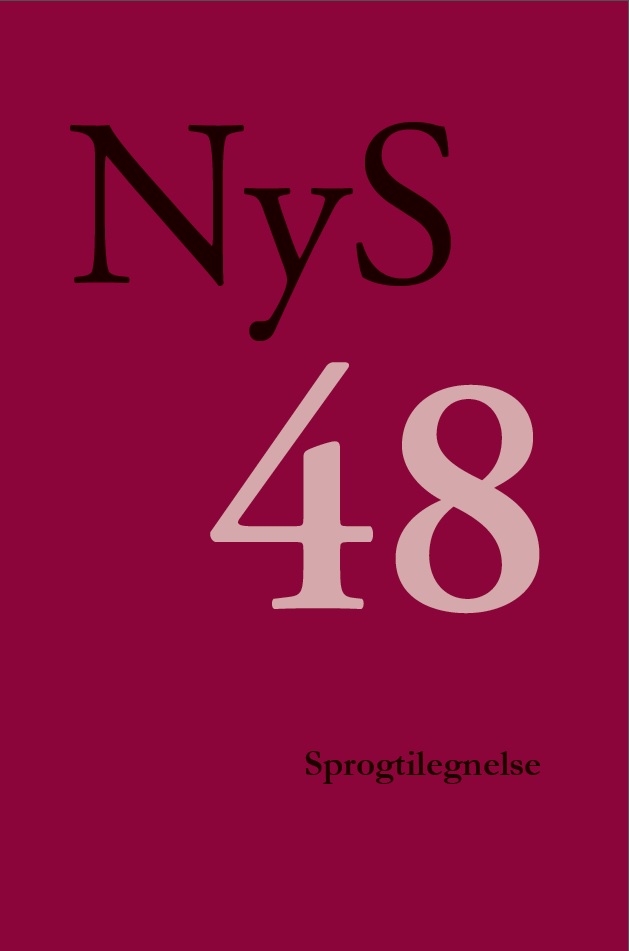Én stavelse, to synsvinkler – børns tilegnelse af dialogiske partikler
DOI:
https://doi.org/10.7146/nys.v48i48.21138Resumé
Children’s understanding of others as mental beings with feelings and beliefs develops radically during early childhood, and studies in the ontogeny of complement-clause constructions (e.g. Brandt et al. 2010) and evidential affixes (Choi 2006) show that children also begin to acquire linguistic tools for communicating about these perspectives early in their development. However, it is less well known how children acquire viewpoint constructions that are less salient in their input than complement-clause constructions and evidential affixes, i.e. how motivated children are to look for interpersonal meanings without strong linguistic cues. Danish dialogic particles are optional, stressless, utterance-medial monosyllables specifying how interlocutors’ understandings converge and differ (Davidsen-Nielsen 1996). Through a spontaneous-speech analysis of a kindergarten corpus (94 hours, 16 children: 1;10-3;8 to 4;6-6;3 years), I here show that Danish preschoolers begin to use these inconspicuous particles in group interactions during their fourth year of life, and that they develop a nuanced repertoire during the following two years. This is a strong indicator of children’s stable monitoring of perspectives and their motivation to generalize over situations with common perspectival traits – even in the absence of salient linguistic cues.Downloads
Publiceret
Citation/Eksport
Nummer
Sektion
Licens
Forfatteren/forfatterne og NyS har ophavsret til de artikler og anmeldelser der bringes i tidsskriftet. NyS har ophavsretten til den udgivne version af tidsskriftet. Forfatteren har ophavsretten til sin egen tekst. Forfattere kan arkivere den publicerede artikel på deres institutions forskningsarkiv (Institutional Repository) eller en privat hjemmeside, når forfatteren samtidig linker til artiklen med den officielle DOI.
For artikler publiceret i NyS tillades at læsere kan downloade, kopiere, udskrive, søge eller linke til og citere fra artikler til ethvert lovligt formål. Artikler kan frit deles og linkes til på forsknings- og undervisningsnetværk (så som Blackboard, Moodle, Canvas o.a.). Link foretrækkes fordi det giver oplysning om brug af tidsskriftets artikler, og fordi det anerkender tidsskriftets redaktionelle arbejde. NyS tillader ikke at læsere bruger artikler eller dele af dem i egne artikler uden at citere, eller at læsere på anden vis anvender dem til kommercielle formål.





